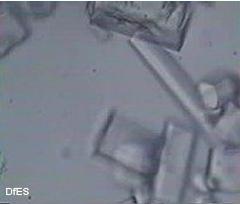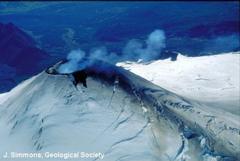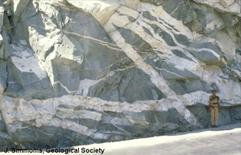Crystallisation of Magma
Magma: sticky or runny?
Magma can have different compositions depending on how it was formed. Magma also varies in temperature, and in how much dissolved gas it contains.
All of these factors control the viscosity of the magma (whether it is relatively runny or very thick and sticky).
Viscosity, in turn, controls how magma behaves as it rises through the crust, and erupts at the surface.
All of these factors control the viscosity of the magma (whether it is relatively runny or very thick and sticky).
Viscosity, in turn, controls how magma behaves as it rises through the crust, and erupts at the surface.
Cooling rate and grain size:
 The rate at which magma cools controls the grain size of the igneous rock that is formed. More rapid cooling produces finer-grained rocks. Find out more on Cooling Rate and Grain Size.
The rate at which magma cools controls the grain size of the igneous rock that is formed. More rapid cooling produces finer-grained rocks. Find out more on Cooling Rate and Grain Size. Volcanoes:
 Magmas that are hot and relatively runny are more likely to reach the surface in volcanic eruptions than cooler, more viscous magmas. Find out more on Volcanoes & Extrusive Igneous Rocks.
Magmas that are hot and relatively runny are more likely to reach the surface in volcanic eruptions than cooler, more viscous magmas. Find out more on Volcanoes & Extrusive Igneous Rocks. Igneous intrusions:
 Sometimes, magma does not reach the surface. Instead, it stays within the crust, where it slowly cools and crystallises to form igneous intrusions. Find out more on Igneous Intrusions.
Sometimes, magma does not reach the surface. Instead, it stays within the crust, where it slowly cools and crystallises to form igneous intrusions. Find out more on Igneous Intrusions. 






